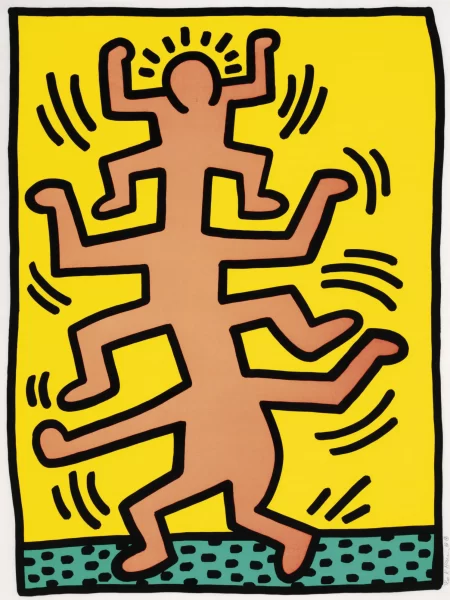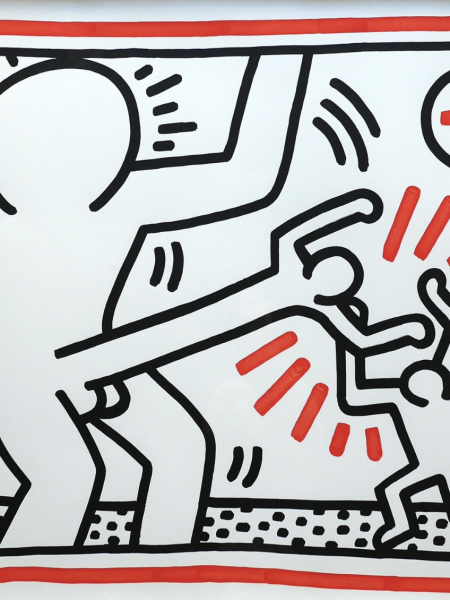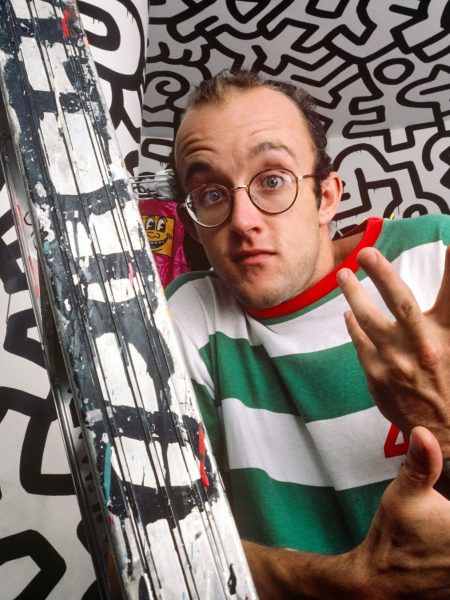
sex, drugs & pop art
Sometimes I have the impression that they could be dubbed ‘The Holy Trinity of Pop Art’. And by ‘they’, I mean: Keith Haring, Andy Warhol and Jean-Michel Basquiat. Not only did all three shape the art of the 1980s, but at one point were inseparable, meeting regularly at Studio 54 or the Mudd Club. Homosexuality, sex, drugs, AIDS, and celebrities – but that’ not all the unforrgettable, recession-driven New York was about. It was about showing art that, locked in galleries and museums, needed a new revelation. The art of each of these three artists was propelled onto a new pedestal not only thanks to their early death, but mainly thanks to their bold approach to global – or what many nowadays would be quick to call ‘social-media’ – art.
Eccentric, full of contradictions on the outside, determined on the inside to ‘free’ artistry from the embrace of curators, they didn’t mind rejection. Not only that, they decided to transform the cultural world in their own way and ‘go pop’. It was them who decided that, in the rebellion against the impossibility of penetrating the elite of the contemporary world, they would create their own avant-garde club and a string of art galleries.
One of the founders and pioneers of the movement was Keith Haring, who came up with the idea of setting up a night-time gallery on the 4th floor of the Mudd Club and for Club 57 to host periodic artistic events. One of such events was the First Annual Group Erotic and Pornographic Art Exhibition – a space for punk-rock feminism, male cabaret, drugs, but also for broadly understood creative invention and artistic performances. As you can guess, the project soon became an orgy hotspot where everyone knew everyone.
Despite Keith’s erotic ventures and his love of the nouveau riche lifestyle, it’s worth noting that he wanted himself, and therefore his art, to be recognizable, as evidenced bt the fact he was ready to showcase it in a way that was understandable to a wider audience. He had a lot of altruism and compassion, which he wanted to express in the form of murals and posters with a clear but funny message. To do that, he didn’t need (as everyone today) the Internet, a smartphone or a TV ad. Instead, he would use public space to address gender discrimination, ethnic inequality or social injustice around the world.
Even when he found out about his illness at the age of 29, he chose to transform this awareness into even better artworks, explicitly or implicitly referring to the AIDS terminology.
As Keith himself revealed to his biographer, his contour-shaped figurines of a man hit by a car on a pedestrian crossing, a simple (comic book-like) line wouldn’t be easily forgotten. Not only it wasn’t, it remains big to this day. Clothing, accessories, posters, decor – all of this surrounds us, seemingly free from expiration date.
31 – that’s the age at which the artist died as a result of AIDS-related complications. Having said that, he lived long enough to become an icon of the pop-art world and go down in history alongside the likes of Basquiat, Warhol, Madonna, Yoko Ono, Vivienne Westwood and Grace Jones.










